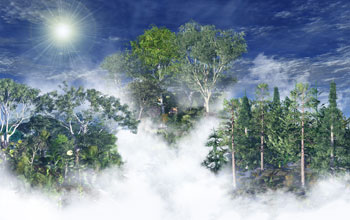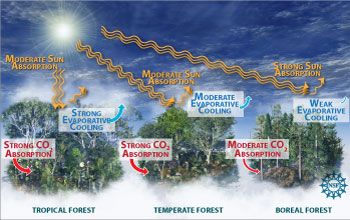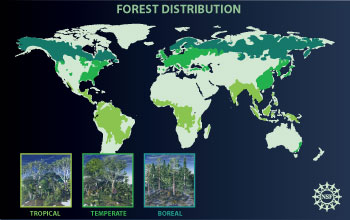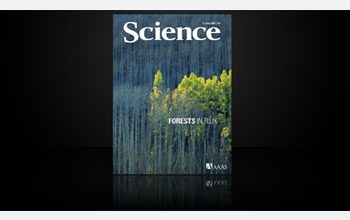All Images
News Release 08-102
If a Tree Falls in the Forest, and No One Is Around to Hear It, Does Climate Change?
Research still needed to fully understand impact of global forests on climate change
This material is available primarily for archival purposes. Telephone numbers or other contact information may be out of date; please see current contact information at media contacts.

There are roughly 42 million square kilometers of forest on Earth, a swath that covers almost a third of the land surface, and those wooded environments play a key role in both mitigating and enhancing global warming.
Credit: Nicolle Rager Fuller, National Science Foundation
Download the high-resolution JPG version of the image. (1.2 MB)
Use your mouse to right-click (Mac users may need to Ctrl-click) the link above and choose the option that will save the file or target to your computer.
In this interview, Gordon Bonan of NSF's National Center for Atmospheric Research in Boulder, Colo., discusses the latest research on how forests impact climate. The research is covered in a review paper submitted by Bonan to the June 13, 2008, forest ecology issue of the journal Science. Bonan discusses how forests both cool, and in some cases warm, the Earth, and how researchers are working hard to better understand this complicated relationship.
Credit: National Science Foundation / The National Center for Atmospheric Research

Forests play an integral role in the Earth's climate, and each forest type--tropical, temperate and boreal--has varying impacts on the climate, serving to both cool and warm the Earth. Forests help reduce global warming by absorbing the greenhouse gas carbon dioxide through photosynthesis and cooling the atmosphere through evaporation and transpiration. However, some forests, such as boreal forests in the northern latitudes, can be darker than their surrounding terrain and absorb the sun's energy more readily, which can lead to increasing warming. The play between these competing influences is currently an area that scientists are intensely studying.
Credit: Nicolle Rager Fuller, National Science Foundation
Download the high-resolution JPG version of the image. (879 KB)
Use your mouse to right-click (Mac users may need to Ctrl-click) the link above and choose the option that will save the file or target to your computer.

Forests cover nearly a third of the Earth's landmass. Falling into three categories--tropical, temperate and boreal--the forest types each have differing influences on local, regional and global climate.
Credit: Nicolle Rager Fuller, National Science Foundation
Download the high-resolution JPG version of the image. (292 KB)
Use your mouse to right-click (Mac users may need to Ctrl-click) the link above and choose the option that will save the file or target to your computer.

The influence of human society on the future of the world's forests and the role of forests in the global carbon cycle are discussed in Science, beginning on page 1435.
Credit: Copyright 2008 AAAS
Download the high-resolution JPG version of the image. (177 KB)
Use your mouse to right-click (Mac users may need to Ctrl-click) the link above and choose the option that will save the file or target to your computer.
